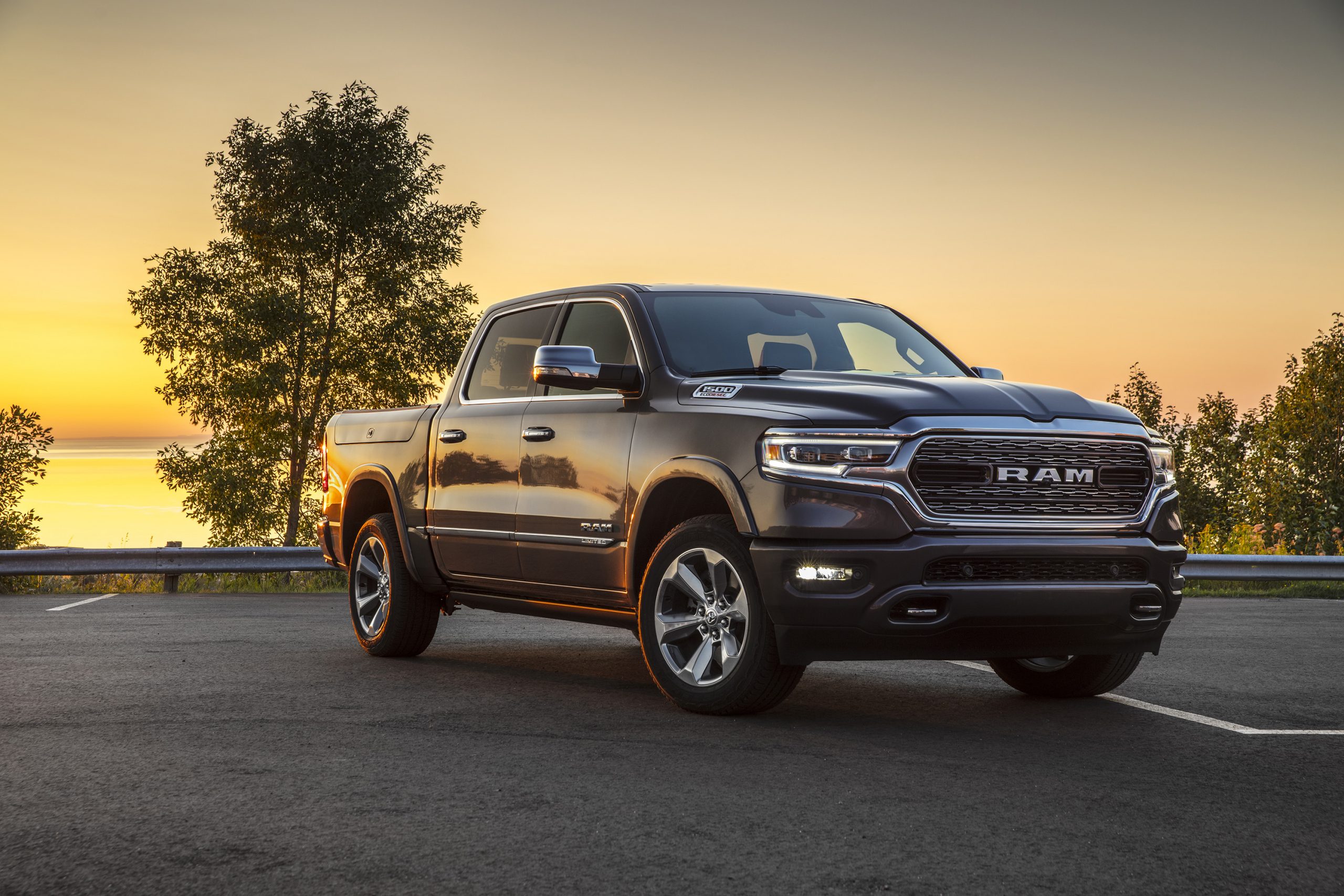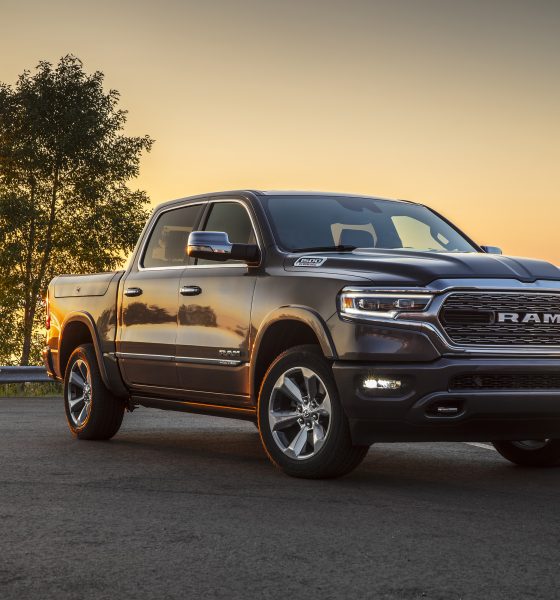

News
Stellantis CEO: EV transition costs are “beyond the limits” the auto industry can sustain
Stellantis CEO Carlos Taveres stated that the pressure for legacy automakers to accelerate the shift to electric vehicles could threaten jobs and vehicle quality as traditional carmakers struggle to manage the higher costs of producing EVs.
Taveres said that the costs of transitioning to electric vehicle production are “beyond the limits” of what the current auto industry can sustain in an interview with Reuters Next. He also highlighted the pressure legacy OEMs get from governments and investors to speed up the transition to electric vehicles.
“What has been decided is to impose on the automotive industry electrification that brings 50% additional costs against a conventional vehicle,” he said.” “There is no way we can transfer 50% of additional costs to the final consumer because most parts of the middle class will not be able to pay.”
He noted that traditional automakers would have to either charge higher prices and make fewer cars or accept lower profit margins to keep up with the additional costs of transitioning to electric vehicles. Taveres emphasized that both paths lead to cutbacks.
Many union leaders in Europe and North America agree that thousands of people could lose their jobs if the auto industry transitioned to EV production. US President Joe Biden is trying to tread the line between pushing legacy OEMS towards transitioning to EVs and providing job security in the auto industry.
Biden has openly supported the Detroit Big Three’s — Ford, General Motors, and Stellantis — EV goals, while puzzlingly ignoring Tesla’s role in the current electric vehicle revolution. The US President seems keen on only promoting automakers that are affiliated with unions in his bid to make the United States of America a powerhouse in the global electric vehicle market, all while ignoring the powerhouse that is Tesla, which already operates within the country.
In the summer, the Detroit Big Three announced their commitment to increase each of their electric vehicle sales by about 40% by 2030. Some may argue that the Detroit Big Three’s EV transition goals go against the current tides, considering that a few countries have already committed to banning fossil fuel cars by the end of this decade, while others are seriously considering the move.
In his recent interview, Tavares noted that automakers need time to test and ensure electric vehicle technology works. He said that speeding up the process “is just going to be counterproductive. It will lead to quality problems. It will lead to all sorts of problems.”
So far, Ford seems to be the only automaker in the Detroit Big Three taking serious steps to becoming an electric vehicle producer. The Ford Mustang Mach-E has proven to be quite a favorite amongst the OEM’s customers. The Mustang Mach-E is still far from perfect, though, as some owners do have critiques about the vehicle and its infrastructure support.
However, Ford seems to be failing forward and learning from its mistakes and improving on the fly — similar to Tesla in some ways. As for Stellantis, it has invested €30 billion into its electrification strategy. On Tuesday, the company invested in solid-state battery startup Factorial.
“We can invest more and go deeper in the value chain,” Tavares said. “There may be other (investments) in the near future.”
In July, the company held Stellantis EV Day 2021, where it announced intentions to become a market leader in low emissions vehicles (LEV) by 2030. Stellantis aims to make over 70% of its sales in Europe and 40% in the United States be comprised of LEVs. The company also stated that all 14 of its brands are committed to offering best-in-class fully electrified solutions.
“Over the next five years, we have to digest 10% productivity a year … in an industry which is used to delivering 2 to 3% productivity” improvement, Tavares said.
It wasn’t clear whether he was referring to productivity in electric vehicle development only. Stellantis stills seem adamant in slowly transitioning into an electric vehicle producer. However, the CEO did get one thing right on the bullseye.
“The future will tell us who is going to be able to digest this and who will fail,” Tavares said. “We are putting the industry on the limits.”
The Teslarati team would appreciate hearing from you. If you have any tips, reach out to me at maria@teslarati.com or via Twitter @Writer_01001101.

Elon Musk
Elon Musk’s X will start using a Tesla-like software update strategy
The initiative seems designed to accelerate updates to the social media platform, while maintaining maximum transparency.

Elon Musk’s social media platform X will adopt a Tesla-esque approach to software updates for its algorithm.
The initiative seems designed to accelerate updates to the social media platform, while maintaining maximum transparency.
X’s updates to its updates
As per Musk in a post on X, the social media company will be making a new algorithm to determine what organic and advertising posts are recommended to users. These updates would then be repeated every four weeks.
“We will make the new 𝕏 algorithm, including all code used to determine what organic and advertising posts are recommended to users, open source in 7 days. This will be repeated every 4 weeks, with comprehensive developer notes, to help you understand what changed,” Musk wrote in his post.
The initiative somewhat mirrors Tesla’s over-the-air update model, where vehicle software is regularly refined and pushed to users with detailed release notes. This should allow users to better understand the details of X’s every update and foster a healthy feedback loop for the social media platform.
xAI and X
X, formerly Twitter, has been acquired by Elon Musk’s artificial intelligence startup, xAI last year. Since then, xAI has seen a rapid rise in valuation. Following the company’s the company’s upsized $20 billion Series E funding round, estimates now suggest that xAI is worth tens about $230 to $235 billion. That’s several times larger than Tesla when Elon Musk received his controversial 2018 CEO Performance Award.
As per xAI, the Series E funding round attracted a diverse group of investors, including Valor Equity Partners, Stepstone Group, Fidelity Management & Research Company, Qatar Investment Authority, MGX, and Baron Capital Group, among others. Strategic partners NVIDIA and Cisco Investments also continued support for building the world’s largest GPU clusters.
News
Tesla FSD Supervised wins MotorTrend’s Best Driver Assistance Award
The decision marks a notable reversal for the publication from prior years, with judges citing major real-world improvements that pushed Tesla’s latest FSD software ahead of every competing ADAS system.

Tesla’s Full Self-Driving (Supervised) system has been named the best driver-assistance technology on the market, earning top honors at the 2026 MotorTrend Best Tech Awards.
The decision marks a notable reversal for the publication from prior years, with judges citing major real-world improvements that pushed Tesla’s latest FSD software ahead of every competing ADAS system. And it wasn’t even close.
MotorTrend reverses course
MotorTrend awarded Tesla FSD (Supervised) its 2026 Best Tech Driver Assistance title after extensive testing of the latest v14 software. The publication acknowledged that it had previously criticized earlier versions of FSD for erratic behavior and near-miss incidents, ultimately favoring rivals such as GM’s Super Cruise in earlier evaluations.
According to MotorTrend, the newest iteration of FSD resolved many of those shortcomings. Testers said v14 showed far smoother behavior in complex urban scenarios, including unprotected left turns, traffic circles, emergency vehicles, and dense city streets. While the system still requires constant driver supervision, judges concluded that no other advanced driver-assistance system currently matches its breadth of capability.
Unlike rival systems that rely on combinations of cameras, radar, lidar, and mapped highways, Tesla’s FSD operates using a camera-only approach and is capable of driving on city streets, rural roads, and freeways. MotorTrend stated that pure utility, the ability to handle nearly all road types, ultimately separated FSD from competitors like Ford BlueCruise, GM Super Cruise, and BMW’s Highway Assistant.
High cost and high capability
MotorTrend also addressed FSD’s pricing, which remains significantly higher than rival systems. Tesla currently charges $8,000 for a one-time purchase or $99 per month for a subscription, compared with far lower upfront and subscription costs from other automakers. The publication noted that the premium is justified given FSD’s unmatched scope and continuous software evolution.
Safety remained a central focus of the evaluation. While testers reported collision-free operation over thousands of miles, they noted ongoing concerns around FSD’s configurable driving modes, including options that allow aggressive driving and speeds beyond posted limits. MotorTrend emphasized that, like all Level 2 systems, FSD still depends on a fully attentive human driver at all times.
Despite those caveats, the publication concluded that Tesla’s rapid software progress fundamentally reshaped the competitive landscape. For drivers seeking the most capable hands-on driver-assistance system available today, MotorTrend concluded Tesla FSD (Supervised) now stands alone at the top.
News
Elon Musk’s Grokipedia surges to 5.6M articles, almost 79% of English Wikipedia
The explosive growth marks a major milestone for the AI-powered online encyclopedia, which was launched by Elon Musk’s xAI just months ago.

Elon Musk’s Grokipedia has grown to an impressive 5,615,201 articles as of today, closing in on 79% of the English Wikipedia’s current total of 7,119,376 articles.
The explosive growth marks a major milestone for the AI-powered online encyclopedia, which was launched by Elon Musk’s xAI just months ago. Needless to say, it would only be a matter of time before Grokipedia exceeds English Wikipedia in sheer volume.
Grokipedia’s rapid growth
xAI’s vision for Grokipedia emphasizes neutrality, while Grok’s reasoning capabilities allow for fast drafting and fact-checking. When Elon Musk announced the initiative in late September 2025, he noted that Grokipedia would be an improvement to Wikipedia because it would be designed to avoid bias.
At the time, Musk noted that Grokipedia “is a necessary step towards the xAI goal of understanding the Universe.”
Grokipedia was launched in late October, and while xAI was careful to list it only as Version 0.1 at the time, the online encyclopedia immediately earned praise. Wikipedia co-founder Larry Sanger highlighted the project’s innovative approach, noting how it leverages AI to fill knowledge gaps and enable rapid updates. Netizens also observed how Grokipedia tends to present articles in a more objective manner compared to Wikipedia, which is edited by humans.
Elon Musk’s ambitious plans
With 5,615,201 total articles, Grokipedia has now grown to almost 79% of English Wikipedia’s article base. This is incredibly quick, though Grokipedia remains text-only for now. xAI, for its part, has now updated the online encyclopedia’s iteration to v0.2.
Elon Musk has shared bold ideas for Grokipedia, including sending a record of the entire knowledge base to space as part of xAI’s mission to preserve and expand human understanding. At some point, Musk stated that Grokipedia will be renamed to Encyclopedia Galactica, and it will be sent to the cosmos.
“When Grokipedia is good enough (long way to go), we will change the name to Encyclopedia Galactica. It will be an open source distillation of all knowledge, including audio, images and video. Join xAI to help build the sci-fi version of the Library of Alexandria!” Musk wrote, adding in a later post that “Copies will be etched in stone and sent to the Moon, Mars and beyond. This time, it will not be lost.”








